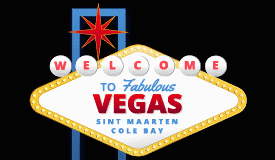(This article is the second in a series of essays written by Dr. Nilda Arduin to commemorate 1 July 1863, the Abolition of slavery within the Dutch Kingdom) - July 2022
According to the Dutch Constitution of 1815, enacted after the Netherlands became a Monarchy, the Dutch Kingdom encompassed the Netherlands and a few colonies and assets of the State (‘volksplantingen en bezittingen van het rijk’). Let’s take a look at what happened since 1 July 1863. Consider the following timeline:
• 1863: Abolition of Slavery
• 1922: The Dutch Constitution included not only the European territory but also Indonesia, Suriname, and Curaçao (and its dependencies)
The pertinent institutions in these territories obtained limited powers to regulate their internal affairs. Holland, the motherland of the colonists, had an obligation towards her people stationed in the overseas territories.
• 1939-1945: World War II
During the war, Queen Wilhelmina in exile announced a Kingdom conference to discuss new relationships between the Kingdom partners. The Netherlands was seeking to further strengthen ties with their largest colony, Indonesia, noting the importance of economic, political, and so-called interpersonal contacts. However, the Netherlands could no longer play its former role.
• 1947 (August 17): The Republik Indonesia declared itself independent from the Netherlands.
• 1950: Interim Regulation Netherlands Antilles, a prelude to the Charter, including the right of self-determination for the islands, further outlined in the Island Regulation (ERNA).
The Island Regulation introduced the formula of ‘general interest of the Kingdom’; followed and further outlined in article 50 of the Charter, which includes supervision.
• 1954: Enactment of the Charter, which was in principle meant to be an agreement between Indonesia and the Dutch Kingdom (the Netherlands, Suriname, and Netherland Antilles).
Reviewing the socio-economic and political history of the relationships within the Kingdom in the period 1954-2022 is vital to understand how we reached where we are today, and understand what we did, or did not do adequately as partners within the Dutch Kingdom to resolve continued conflicts. Who were the negotiators around the table leading up to the enactment of the Charter, if general voting rights to include the descendants of the former enslaved Africans were obtained only in 1948?
• 1969-1974: Awareness Movements on Curaçao and Sint Maarten.
• 1970: The first Afro-Dutch governor (B.M. Leito) was appointed for the Netherlands Antilles.
• 1983: The Windward Islands became three separate territories (Sint Maarten, Saba, Statia).
• 1986: Aruba left the Netherlands Antilles to obtain a separate status.
• 1993-1996: Sint Maarten was placed under preventative Higher Supervision.
• 1994-2000: Attempts to reconstruct and keep the Netherlands Antilles together.
• 2010: The Netherlands Antilles were dismantled; Sint Maarten and Curaçao obtained autonomy pursuant to the Island Regulation of 1950 (ERNA).
Up to 2010 Sint Maarten only had formal representation within the Dutch Kingdom via the Netherlands Antilles.
Whether interested, indifferent or even somewhat hostile towards each other, the intra-regional connection within the Dutch Kingdom is a fact with international consequences. The few colonies and assets of the State became equal partners.
Consider the following actions and discussion points:
- Explore the transition to self-governance in the Caribbean parts of the Dutch Kingdom after the enactment of the Charter.
- Have we heeded and consciously acted upon the lessons learned from; the Awareness Movements of May 1969 on Curaçao, August 1974 on Sint Maarten, and the preventative Higher Supervision on Sint Maarten in the nineties?
- Proper education is an important condition in the development of any country. How can the population/households be mobilized to take advantage of education possibilities offered online in the absence of widely available higher education in Sint Maarten?












